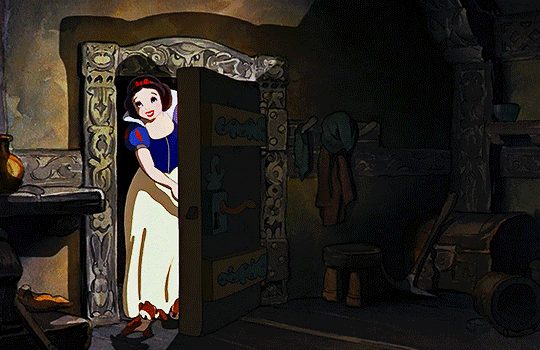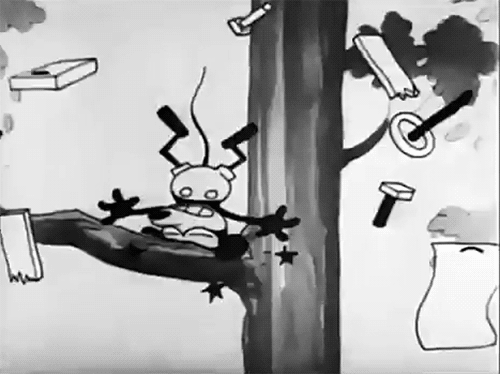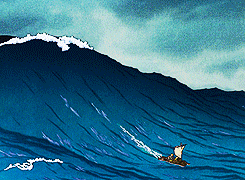originally posted at https://canmom.tumblr.com/post/670773...
Good evening UK friends, good midday US friends, good morning Singapore friends - it is my final week on these shores and it seems that we should mark it by facing up to the old man who once lived just down the road in Burbank.

Like it or not, the shadow of Walter on the animation industry is impossible to avoid. I think I’ve made my opinions on the legacy of his company pretty clear (c.f. Death and Reanimation of the Mouse, or the ancient past of Animation Night 5 when I talked briefly about the strike in the 1940s in advance of Fantasia); we have also had cause to address it on e.g. Hanukkah night when we talked about Don Bluth’s kick up the company’s pants in the 80s and Jeffrey Katzenberg’s acrimonious exit in the 90s, or Dawn of 3DCGI when we saw the birth of Pixar. And we can hardly forget the time we dropped Bambi in the middle of what I might affectionally call animal ryona night. (Aren’t you all glad I heard about that particular fetish? ;p)
But what of the man himself? Treatments of Disney by animators and animation fans often trend hagiographic, such as this exhausting film by Tony White lamenting the end of Disney-style ‘full animation’ which presents Walt as a benevolent protector of the vulnerable animator’s artistic integrity:
In reality of course Disney was an American capitalist at the turn of the 20th century, with all that entails. He was one of five children of businessman Elias Disney, who went through a variety of industries in the course of his life, first as a worker in the railroad industry and in carpentry, then later owning various businesses including a building contractor, a farm and a newspaper distributor.
Elias is something of a contradictory figure. He was apparently an ardent socialist and supporter of the movement of Eugene B. Debbs, in stark contrast to his most famous son. But he was also an authoritarian father who would happily resort to corporal punishment:
Disney never drank alcohol and rarely smoked.[4] According to biographical accounts, Disney was a stern man who could have a strong temper at times,[15] and would take the money his sons earned for “safekeeping”, considering them too young to know the value of money. If his children misbehaved, Disney would not hesitate to punish them with a switch.[23]
Walter was born in Chicago, and grew up during the period when Elias was running the farm in Missouri. He started drawing young, copying newspaper cartoons and later producing them himself; upon becoming An Adult, the first world war was happening and while he was too young to join the army as he wanted, he falsified his birthdate to become an ambulance driver for the Red Cross.
As we noted a few weeks ago, he got his start working with Ub Iwerks, who he met at art school. The two were apprentices at an art studio, but when they were laid off, they started going around other art companies. At this point Walter became aware of the young animation industry, which at the time was mostly dominated by cutout animation (despite figures like Winsor McKay demonstrating the potential for drawing-based animation). He became convinced of the potential of the new technique of cel animation…
Disney’s earliest films include a series called Newman’s Laugh-O-Grams, which were essentially time lapse drawings which he created with Fred Harman:
He moved to Hollywood at 21 in 1923, heading out to join his brother Roy who was sick with consumption like a good Victorian novel character. His aspiration at the time was actually to become a live-action film director, but he found little success; instead, the break came after a New York-based film distributor called Margaret Winkler had a falling out with animator Pat Sullivan. Winkler was set to lose the rights to Fleischer’s Out of the Inkwell series and Sullivan/Mesmer’s Felix the Cat, and she needed some new films to show. Disney said “I got you Ms Winkler” and founded a new animation studio with Roy, within a year hiring Iwerks as one of their main illustrators.
Their first few cartoons were the Alice comedies, an early instance of compositing live action with animation with child actress Virginia Davis playing the main character, interacting with animated characters in an animated setting. The first one was actually made while Disney was in Missouri, at the same time as the Laugh-o-Grams; Walt continuing his streak of getting everyone he met to move to California, and persuaded her parents to move her from Missouri to Los Angeles to star in more films.
In 1925, Disney married one of his employees, ink artist Lillian Bounds. They would go on to have two daughters (one bio, one adopted). Here’s how Walter’s biographers described her:
The marriage was generally happy, according to Lillian, although according to Disney’s biographer Neal Gabler she did not “accept Walt’s decisions meekly or his status unquestionably, and she admitted that he was always telling people ‘how henpecked he is’.”[43][e] Lillian had little interest in films or the Hollywood social scene and she was, in the words of the historian Steven Watts, “content with household management and providing support for her husband”.[44]

After a while, Disney tired of Alice shorts and resolved to move into all animation, creating a character with Iwerks called Oswald the Lucky Rabbit. By this point, Winkler had handed the film distribution over to her husband Charles Mintz, and this led to one of the first big disputes of Disney’s career, and one which would prove very formative. Disney wanted to negotiate a higher fee for the animations; Mintz preferred to lower it, and when Disney refused, took the contracts of most of his animators except Iwerks to run his own company, taking with him the rights to the Oswald character. Alas, we should not take from this that Disney was primarily concerned with the interests of his employees.
Furious, Disney and Iwerks set about creating a replacement, and this is where THE MOUSE is born. This baby egregore was at first pretty unassuming, not yet siphoning the souls of millions of children: another cartoon character in something resembling the Felix the Cat style, with a solid black body, large white eyes and white gloves to draw attention - all design elements derived from vaudeville shows and thus ultimately from minstrelsy.
So what’s the first Mickey Mouse cartoon - Steamboat Willie, right? No, actually, that was the third one: the first two were Plane Crazy and The Gallopin’ Galaucho (both 1928), and neither were especially successful. The break came with a technical innovation: Steamboat Willie had synchronised sound, composed after the fact to match the animation, inspired by the previous year’s live action sound-synchronised film The Jazz Singer.

In these early films, Disney pulled back from directly working on the animation process, instead preferring a voice acting role. Much of the animation was accomplished instead by Ub Iwerks, who singlehandedly animated The Skeleton Dance, but Disney started hiring other local artists, some of whom would stay with the company and become Disney’s renowned Nine Ringwraiths Old Men.
These cartoons, collectively titled Silly Symphonies and scored by composer Carl Stalling, were distributed by Cinephone, a company owned by former Universal director Pat Powers. However their relationship was apparently pretty fraught: in 1931, Disney once again asked Powers for a higher rate, but Powers responded by hiring Iwerks directly (Iwerks being upset with Disney over a general feeling of being taken for granted, exemplified by the time Disney ordered him to draw Mickey for a girl at a party).
At this point, Stalling also quit, believing that Disney Studios was nothing without Iwerks. Disney had a nervous breakdown and fled to (pre-communist!) Cuba to recover.
These years brought some pretty significant changes to the animation process. First, in 1930, Disney implemented the key animator/inbetweener division: Iwerks would no longer draw every cel, but only the key poses, and lesser-paid artists would draw the rest. Then, after the success of The Three Little Pigs in 1933, Disney started to believe in the importance of telling emotional stories and created a new storyboarding department to plan out his films. Although possibly the most successful animated short film ever made, Pigs is unfortunately a bit of a painful watch today, with the Wolf dressing up as an antisemitic caricature…
Apparently not one to build up to things slowly, Disney followed this by embarking on what contemporary commentators called ‘Disney’s folly’, a feature-length, full colour+sound animated film based on the fairytale Snow White and the Seven Dwarfs. For this, Disney spared no effort, bringing in animals to the studio to help the animators study motion as we discussed back on Animation Night 65: Rotoscopy. The major innovation, created during the film, was the multiplane camera: by moving cels vertically on different layers in front of the camera, it would be possible to create all kinds of semi-3D parallax effects. The first demonstration of this effect came in 1937 with The Old Mill, which we watched back of animals night; Disney was so taken with it that he ordered parts of Snow White reshot with the new effects.
Snow White did not, it turned out, bankrupt the studio. Instead, despite going seriously over budget at 1.5 million dollars (this was a lot for a movie back then!), it broke box office records, getting 6.5 million back. This began the studio’s ‘golden age’, where they attempted to push their characteristically lavish ‘full animation’ as far as it would go. The next feature would be Pinocchio (begun 1938, released 1940) and Fantasia (begun 1939, also released 1940).
At this point we see the rise of ‘effects animation’ as a special discipline: both films are renowned for their elaborately detailed and naturalistic depiction of water. In Elemental Magic, a very useful guide to effects animation by former Disney animator Joseph Gilland, he writes (with the usual worshipful tone):
In 1930, Walt Disney Studio’s special effects department was made up of only two artists. Ugo D’Orsi, who would go on to animate the incredible water effects in Fantasia’s “The Sorcerer’s Apprentice” and Cy Young, who animated the dancing flowers in Fantasia’s “Nutcracker Suite”. But that was soon to change drastically. By 1935 and throughout what is often referred to as the “Golden Years” of animation (1935-1941) the effects department at Walt Disney Animation continued to grow and develop into a very specialized department, and by the late ’30’s with the production of Fantasia, the effects department had blossomed into a diverse collection of well over 100 highly specialized artists. Led by the genius of artists like Carleton (Jack) Boyd, Josh Meador, and Dan McManus, this department elevated special effects animation to the level of a truly fine art.

Such technical prowess was not, it turned out, a big draw to audiences at the outset of a world war, and after these two very expensive films, the studio was severely financially imperilled. In an attempt to address this, Disney took the company public and declared severe salary cuts, an additional attack on top of a deeply hierarchical studio structure and a completely chaotic pay structure that would give people on the same job different salaries seemingly at random.
The animators, already strained by a lack of credit and recognition, responded by joining a union and going on strike for five weeks in 1941 led by Art Babbitt; Disney once again ran away, accepting the US government’s invitation to make a ‘goodwill tour’ of several countries in South America, aiming to forestall any alliances with the Nazis, while the National Labour Relations Board mediated the strike. This resulted in the film Saludos Amigos which we watched on Animation Night 68 (Brazil).
In the aftermath, while the union won a favourable contract, many animators ended up leaving the studio, and meanwhile Disney would resent the strikers for the rest of his life. He would blacklist the members from work and, ultimately, report on them to the House Un-American Activities Committee during the Cold War:
Disney never forgave the participants and subsequently treated union members with contempt,[6] arguing in a letter that the strike “cleaned house at our studio” and got rid of “the chip-on-the-shoulder boys and the world-owes-me-a-living lads”.[35] Testifying to the House Un-American Activities Committee, Disney alleged that communism had played a major role in the strike, and many of the participants were blacklisted, including Art Heinemann, an art director on Fantasia, who was considered management. He went out on strike in sympathy with the animators and was subsequently fired and blacklisted, his name removed from Fantasia’s credits.[6]
One other outcome of the combination of the strike and WWII labour shortages was the first crack in the studio’s strict gender segregation; as many animators went off to war and Disney was recruited as a propaganda outlet, it opened the door for women to leave the ink and paint department. So while Donald Duck got the draft, Reidun “Rae” Medby had the opportunity to become an Assistant Animator in an atmosphere of heavy secrecy.
That’s where we’ll end our story for now; perhaps another time we’ll look into Walter’s post-war period!
Disney’s major legacy is of course the Disney company, now the supreme corporate entertainment omnivore that has almost perfected its CONTENT generating machine to be just engaging enough to continue to get bums in seats seemingly forever. But of course within our sAcReD dIsCiPlInE, it’s also interesting to see how a lot of the techniques developed at his company - the multiplane camera, the key animator/inbetweener hierarchy - became central technologies in overseas in Japan, even in the anime industry which took them in a very different direction. If anime is defined primarily by a production process, as has been debated post Thomas Lamarre’s ‘animetism’, Disney originated them to quite a different end.
Of course, the other long shadow from this period is the TWELVE PRINCIPLES, which have somehow become a sort of holy writ for animation pedagogy despite varying from ‘genuinely fundamental to all types of animation’ (such as timing) through ‘a compelling artistic effect but hardly mandatory’ (solid drawing) to ‘hopelessly vague’ (appeal). But more about that some other time.
Anyway, that’s all I got time to write! I am afraid I have to postpone the actual show this until American Evening Times, with apologies to UKfriends, because in a couple of hours I’ll be setting off for my appointment at the mysterious “Museum of Jurassic Technology”, sure to be an enlightening experience. But the plan is to view the two early Disney features we’ve yet to cover, Snow White and Pinocchio, along with a selection of Silly Symphonies. Hope to see you there - I’ll announce when it’s time, but it will probably be starting around 9-10pm Cali time/5-6am UK time at twitch.tv/canmom. (Apologies UK friends, we’ll return to a more UK-friendly schedule once I’m home.
Until then, I’ll leave you with titmouse’s riff on those twelve principles from annecy last year, from which we get tonight’s title~
Comments